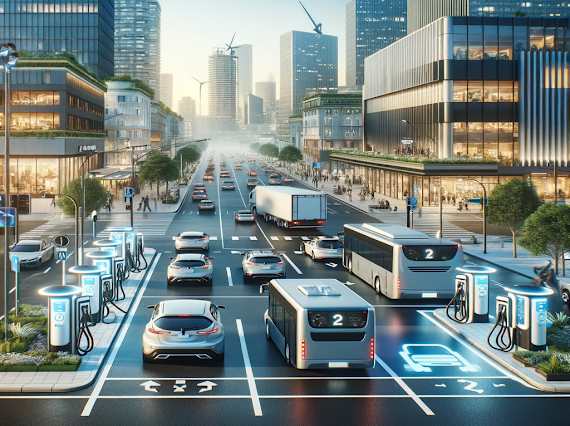As hurricane season looms, the pressing need for resilient lighting systems becomes increasingly apparent. Resilient lighting, in contrast to emergency lighting, ensures illumination remains uninterrupted during natural or unnatural disasters. The Southeast region of the United States, known for its susceptibility to hurricanes and floods, demands the utmost resilience in lighting solutions. In this article, we will talk about resilient commercial lighting for hurricanes and natural disasters in detail. Lets start!
Climate change has given rise to an onslaught of extreme weather events, ranging from hurricanes and tornadoes to floods and wildfires. The escalating sea levels further exacerbate the risk. Among these events, hurricanes stand as the primary culprits behind mass power outages, underscoring the criticality of resilient lighting in fortifying the overall resiliency of buildings.
Creating an effective resilient lighting system for hurricanes and flooding demands meticulous consideration of various factors. One approach involves elevating luminaires and equipment above flood levels, safeguarding them against potential damage and ensuring their continued operation. Alternatively, systems can be positioned strategically to avoid being affected by the breakaway elements of the building. Employing sealing conduits serves as another effective method to enhance the resilience of lighting systems against flooding.
Resilient lighting systems have significantly mitigated liabilities for government offices, corporate buildings, and college campuses. Energywise Solutions, a leading provider of resilient lighting solutions, offers a range of options, including generators, batteries, solar panels, and strategically placed luminaires above flood plains. Embracing innovative methods, Energywise Solutions also explores the utilization of electric vehicles to sustain the lights during prolonged power outages.
The construction industry has responded to the urgency of resilience through the development and implementation of building codes, such as ASCE-24, ICC 500, and NFPA 1600. Energywise Solutions takes a proactive approach to programming resilient lighting systems, customizing solutions to meet the specific resilience requirements dictated by the location and purpose of the building. Considering factors such as the building’s role during extreme events, operational timeframes, critical functions, and security measures further strengthens the resilience of Energywise Solutions’ lighting systems.
With the escalating frequency and severity of natural disasters, the demand for resilient lighting equipment continues to surge. The absence of lighting in the aftermath of disasters poses substantial safety, operational, and accessibility challenges. While traditional options like generators and long-lasting batteries persist, Energywise Solutions champions the integration of cutting-edge solutions such as electric vehicles and solar-powered systems, capitalizing on their extended duration potential. As more regions adopt resilient building codes and recognize the need for resiliency, the market for resilient lighting solutions is set to experience sustained growth. The military, known for its stringent requirements regarding power outages, serves as a testament to the efficacy of resilient lighting, paving the way for broader adoption across various sectors.
In conclusion, Energywise Solutions understands the pivotal role resilient lighting plays in fortifying building resiliency, particularly in hurricane-prone areas and flood-prone regions. As the market continues to embrace building codes that prioritize resilience, Energywise Solutions stands at the forefront, providing tailored solutions that integrate the latest technologies and best practices. With natural disasters becoming increasingly frequent and severe, resilient lighting equipment remains an indispensable investment in ensuring safety, operational continuity, and accessibility.
Frequently Asked Questions (FAQs)
FAQs about Resilient Commercial Lighting for Hurricanes and Natural Disasters
Resilient lighting distinguishes itself by providing continuous illumination during disasters, in contrast to emergency lighting that typically offers limited backup power for about 90 minutes.
Energywise Solutions offers a wide range of resilient lighting options, including generators, batteries, solar panels, and strategically placed luminaires above flood plains. They also explore innovative solutions such as the use of electric vehicles to sustain lighting during prolonged power outages.
Key considerations include elevating luminaires above flood levels, positioning systems away from breakaway building elements, and utilizing sealing conduits for flood resistance. Energywise Solutions takes these factors into account when customizing resilient lighting solutions.
Resilient lighting systems minimize liabilities and ensure continuity of operations in critical settings, enhancing safety, operational efficiency, and accessibility during and after natural disasters.
Building codes like ASCE-24, ICC 500, and NFPA 1600 provide guidelines for constructing resilient buildings. Energywise Solutions adheres to these codes when programming resilient lighting systems to meet the specific resilience requirements dictated by each building’s location and purpose.
The increasing frequency and severity of natural disasters have created a growing demand for resilient lighting equipment. Energywise Solutions is at the forefront of this market, offering advanced solutions to address safety, operational, and accessibility challenges.







